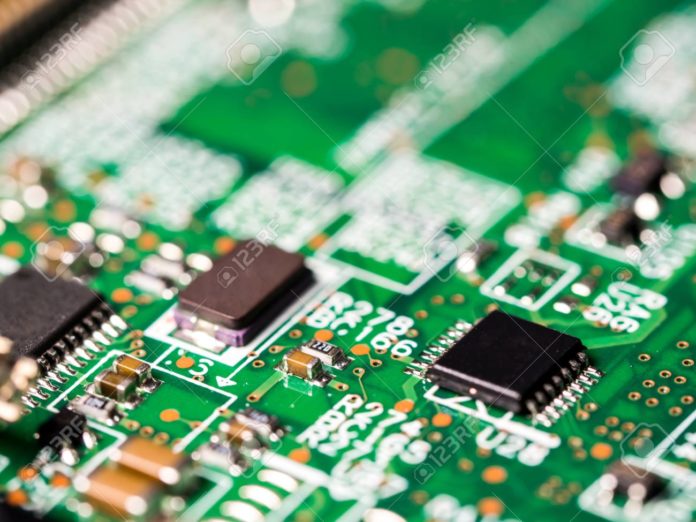It all started with the Integrated circuit. Ever since its conception, it has made boundless contributions to the advancement of the Human race. ICs might just be one of the most important tools ever devised by mankind. From the Navigation systems of Apollo 11 to the Driver-Less systems of the latest Tesla, the cutting edge of Human-Technology has been driven by ICs. All of this has been predicted by Moore’s Law, but what is it?
Moore’s Law
In 1965, Co-founder of Intel, Gordon Moore made an astounding observation, he found that ever since their invention, the number of transistors per square inch on ICs had doubled every year. He predicted that the current trend would carry on for the foreseeable future. In the following years, the pace slowed down a bit, but data density has doubled about every 18 months, this is the current definition of Moore’s Law, recognized by the man himself. The effects of Moore’s law’s holding have been monumental and very much visible.

Down We Go
The transistors have been contracting at a breath-taking pace and the effects have been visible all across the world. From the days of the old boxy computers to the modern-day slim smartphones, this pace has brought about several modern marvels and has reached the common man.
We can fit more computing power in our pockets today than what the astronauts took with them on the Apollo missions and this has meant that everyone has access to this incredible tool. Our society has changed because of this. We can take care, conduct business and stay in touch with each other like never before.

The Death of Moore’s Law
This year in January, one of the co-founders and CEO of Nvidia Jensen Huang, remarked: “Moore’s Law isn’t possible anymore”. This was no surprise as we had envisioned it coming a long time ago.
Transistors are like tiny electric switches, they are very small, in fact, they are so small that an average processor might contain one million million millions of these transistors. Till now, everything was fine because we were shrinking the transistors every day, but today when companies like Samsung are shipping chips with 7nm architecture, we are about to reach the end of Moore’s law. It’s just isn’t possible to shrink transistors anymore.

The basic principle behind transistors is that they are either Open or Close i.e. either 1 or 0. This simple capability has made it possible for computers to solve complex mathematical problems and simulate the most unpredictable environments. The problems lie in the fact that as we shrink the transistor, we reach a point where it is comparable to electrons in size.
This is where Quantum Tunnelling kicks in. Quantum tunnelling is the phenomenon where a subatomic particle passes through a potential barrier. The electron passes through the transistors as if they don’t even exist. As you can see, this presents some problems. Since transistors cannot stop electrons’ flow, there’s only one state in which the transistor can be, which makes it utterly useless as a transistor. Hence, the end of Moore’s Law.
Further Reading: http://wordpress-695532-2297746.cloudwaysapps.com/millennium-prize-problems-your-mantra-to-a-million-dollars/ http://wordpress-695532-2297746.cloudwaysapps.com/pi-day-special-how-much-pie-do-you-really-need/


